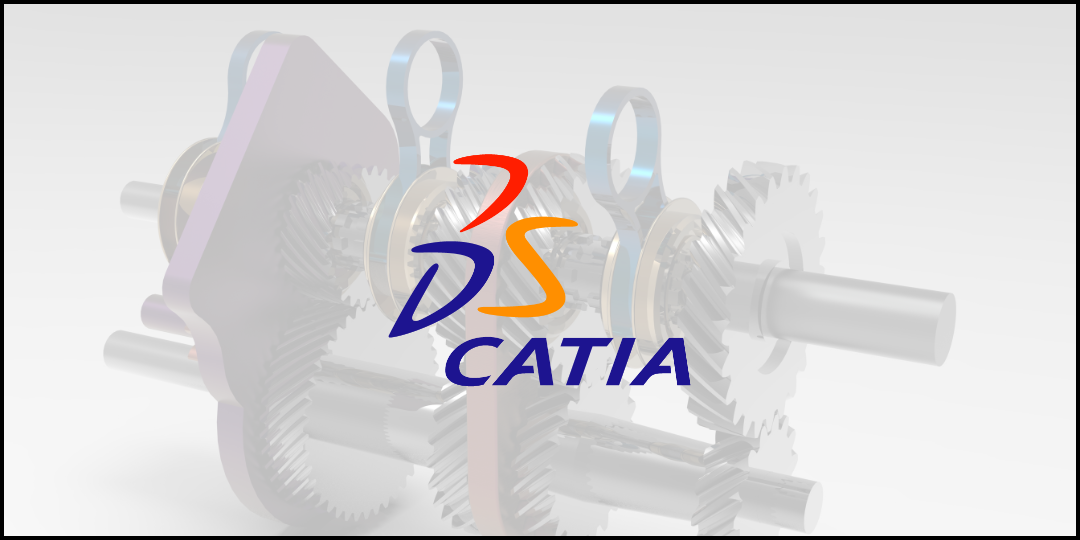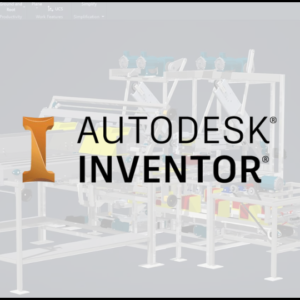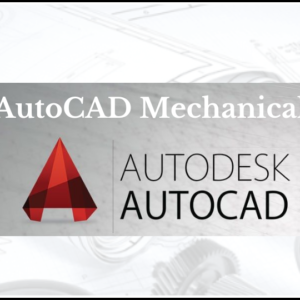Description
CATIA (Computer-Aided Three-dimensional Interactive Application) is a multi-platform software suite for CAD (Computer-Aided Design), CAM (Computer-Aided Manufacturing), CAE (Computer-Aided Engineering), 3D modeling, and PLM (Product Lifecycle Management). Developed by Dassault Systèmes, it’s widely used in various industries, including aerospace, automotive, industrial machinery, and more.
Key Features:
- Comprehensive Suite: CATIA provides tools for every stage of product development, from conceptual design and engineering to manufacturing and product lifecycle management.
- Advanced Surface Modeling: CATIA is particularly strong in complex surface modeling, making it ideal for industries like aerospace and automotive, where surface precision is crucial.
- Product Lifecycle Management (PLM): It integrates with ENOVIA and DELMIA to provide a full PLM solution, managing the entire lifecycle of a product from design to decommissioning.
- Mechanical Design: Offers robust capabilities for mechanical engineering, including part design, assembly, and simulation tools.
- Collaboration: CATIA allows for collaborative product development, enabling multiple users to work on different aspects of a design simultaneously.
- Industry-Specific Modules: CATIA offers specialized modules for different industries, ensuring that users have the tools they need for their specific applications.
CATIA Course Structure
Module 1: Introduction to CATIA
- Lesson 1.1: Overview of CATIA and Its Applications
- Introduction to Dassault Systèmes and the CATIA environment
- Industry applications of CATIA
- Comparison with other CAD software (e.g., SOLIDWORKS)
- Lesson 1.2: Getting Started with CATIA
- Installation and system requirements
- User Interface overview
- Customizing the workspace
- Basic navigation and shortcuts
Module 2: Basic Sketching and Part Design
- Lesson 2.1: Introduction to Sketcher Workbench
- Understanding the Sketcher workbench
- Creating basic geometric shapes (lines, circles, rectangles)
- Constraints and relations
- Sketch analysis and troubleshooting
- Lesson 2.2: Part Design Basics
- Introduction to the Part Design workbench
- Creating 3D features from sketches (extrusion, revolution, loft, sweep)
- Boolean operations (union, subtract, intersect)
- Feature editing and design intent
Module 3: Advanced Part Design
- Lesson 3.1: Complex Geometry Creation
- Advanced sketching techniques
- Multi-body design and managing bodies
- Creating complex 3D shapes using advanced tools (fillet, chamfer, shell)
- Feature-based modeling
- Lesson 3.2: Surface Modeling (Introduction)
- Introduction to wireframe and surface design
- Creating and modifying surfaces
- Surface operations (trim, extend, offset)
- Surface analysis tools
Module 4: Assembly Design
- Lesson 4.1: Introduction to Assembly Workbench
- Understanding assembly design concepts
- Inserting components and creating assemblies
- Applying assembly constraints (coincident, concentric, distance)
- Managing assembly structures (tree, hierarchy)
- Lesson 4.2: Advanced Assembly Techniques
- Top-down vs. bottom-up design
- Assembly management (product structure, components)
- Managing large assemblies
- Interference detection and clash analysis
Module 5: Drafting and Detailing
- Lesson 5.1: Creating 2D Drawings
- Introduction to the Drafting workbench
- Creating views (orthographic, isometric, section)
- Dimensioning and annotations
- Managing drawing sheets and standards
- Lesson 5.2: Advanced Drafting Techniques
- Customizing drawing templates
- Creating and managing bills of materials (BOM)
- Detailing complex parts and assemblies
- Exporting and printing drawings
Module 6: Surface Design (Advanced)
- Lesson 6.1: Advanced Surface Modeling
- Complex surface creation (swept, blended, multi-sections)
- Surface healing and repair techniques
- Advanced surface operations (fillet, offset, trim)
- Converting surfaces to solid bodies
- Lesson 6.2: Generative Shape Design
- Introduction to the Generative Shape Design workbench
- Creating freeform surfaces
- Advanced shape design techniques
- Integrating surfaces with solid models
Module 7: Simulation and Analysis
- Lesson 7.1: Introduction to Simulation in CATIA
- Understanding FEA basics and simulation workflow
- Setting up a simulation (material properties, loads, boundary conditions)
- Running and analyzing basic simulations (stress, deformation)
- Introduction to optimization tools
- Lesson 7.2: Advanced Simulation Techniques
- Non-linear analysis
- Thermal and dynamic analysis
- Multi-physics simulations
- Post-processing and result interpretation
Module 8: Advanced Topics and Customization
- Lesson 8.1: Knowledgeware and Automation
- Introduction to Knowledgeware (rules, checks, reactions)
- Automating tasks with macros and scripting
- Custom feature creation
- Lesson 8.2: Collaboration and Data Management
- Integrating CATIA with PLM systems (e.g., ENOVIA)
- Collaborative design practices
- Managing design data and revisions
- Exporting and importing data between systems
Module 9: Capstone Project
- Lesson 9.1: Project Planning and Execution
- Project selection (industry-specific)
- Planning and design stages
- Modeling, assembly, and drafting
- Simulation and validation
- Lesson 9.2: Final Presentation and Review
- Presentation of the project
- Peer and instructor feedback
- Final refinements and documentation
- Course wrap-up and certification
Course Duration:
- Essential: 50-60 hours
- Proficient: 110-120 hours
- Expert: 170-180 hours
- Project: 15-20 hours
Assessment:
- Quizzes at the end of each module
- Practical assignments and exercises
- Final capstone project
Deliverable:
- Lifetime Access to Digital Notes.
- Lifetime Doubts Clearning.
- Authorized Certificate From MSME, ISO 9001:2015 , Govt. of India, etc.
After completing a CATIA course, students should have acquired a range of skills that can be applied in various professional settings. Here’s an outline of what they can do and how they can continue their development:
Skills Acquired:
- Proficiency in 3D Modeling:
- Ability to create detailed 3D models of parts and assemblies.
- Competence in using both solid and surface modeling techniques.
- Assembly Design:
- Skills in creating and managing complex assemblies.
- Proficiency in applying constraints and detecting interferences.
- Technical Drafting:
- Competence in generating 2D drawings from 3D models.
- Ability to apply industry standards in drafting and detailing.
- Simulation and Analysis:
- Basic knowledge of Finite Element Analysis (FEA) within CATIA.
- Ability to set up, run, and interpret basic simulations.
- Product Lifecycle Management (PLM):
- Understanding of integrating CATIA with PLM systems for data management.
- Knowledge of collaborative design and revision management.
- Advanced Surface Design:
- Ability to create and modify complex surfaces.
- Skills in converting surfaces to solid models and vice versa.
- Customization and Automation:
- Basic knowledge of automating tasks with Knowledgeware and macros.
- Understanding of how to customize the CATIA environment to improve workflow.
Career Opportunities:
- CAD Designer/Engineer:
- Work as a CAD designer or engineer in industries like automotive, aerospace, industrial machinery, or consumer products.
- Product Design Engineer:
- Engage in product design and development, from concept to final production.
- Simulation Engineer:
- Specialize in using CATIA for performing simulations to validate designs.
- PLM Specialist:
- Work with Product Lifecycle Management systems to manage the complete lifecycle of products.
- Surface Modeler:
- Focus on complex surface modeling, especially in industries requiring high precision, such as automotive or aerospace.
- Draftsman/Technical Illustrator:
- Create detailed technical drawings and documentation for manufacturing.




